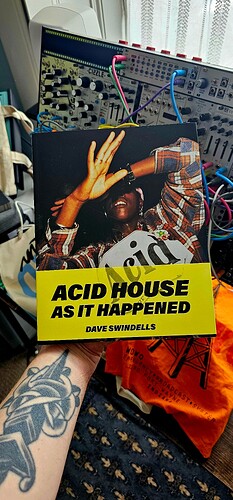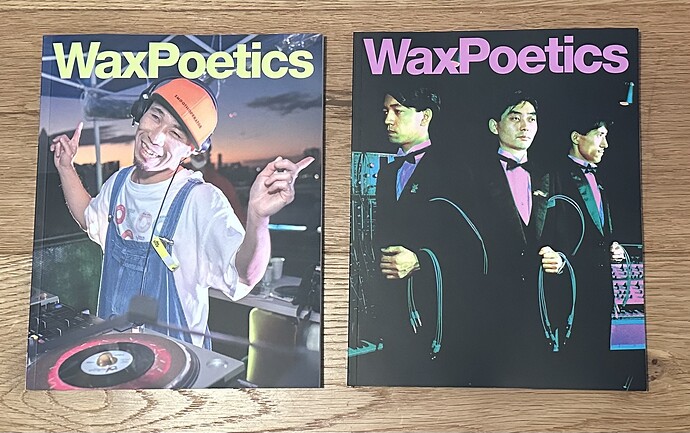"Behind The Groove: NYC's Disco Underground" written by Steven Harvey in 1983 | Don Play saved for later, I need to find my glasses first
Great read
Remember it from Jahsonic (v early site with lots of disco)
I’ve been trying to remember the name of that site for months, I loved it. Very basic design but great content as I remember. Lapped it up at the time.
Thanks.
The jahsonic site is still there.
Thought this was a good answer!
How do your work and your creativity relate to the world and what is the role of music in society?
Very very good question. For a long time I was convinced that being an artist, especially for electronic music, in a capitalist society is a good way of dealing with everything, because what you do is very unuseful, it is only about temporary enjoyment and the money that is paying your bills comes from beers and entrance fees that people spend from money that they can waste.
At the same time, a good techno party can really leave you changed for good. Being around accepting and loving people is a wonderful experience!! ![]()
Today, with an ongoing war, CO2 emissions still RISING, and a few more apocalyptic tendencies, I am not convinced of that thought anymore. But neither do I have a good answer on what to do instead. So I pretend, as we are all doing, that everything is still ok.
Music in general is I think one of those mysteries in life that is keeping us faithful and alive, it is in one way or the other part of our life journey, may it be children songs, church songs, traditional dances, national anthems, classical music, jazz, blues, hip hop … - it is part of our culture, our identity, we sing with it, hum it, dance with it, only listen to it, make it, share it - it is deeply deeply embedded in our human existence.
Personally I would like to promote making music as a “self care” practice, like brushing one’s teeth or going to a yoga class - I think this idea of learning an instrument got a bit lost. It is not about presenting it, it is about making it, and making it with others.
From this interview:
Fifteen Questions Interview with Jascha Hagen
FYI there’s a great Jascha Hagen track on here (not too familiar beyond that)
He’s a great producer. The ‘Pan That Shit Out Of Your Brain/Afternoon of a Faun’ release is amazing.
quite a read!
Sharks off Brazil coast test positive for cocaine - BBC News i sense a film coming on
Don’t think I’ve seen this mentioned here. Will be picking up a copy soon.
A fascinating history that examines how real estate, gentrification, community and the highs and lows of New York City itself shaped the city’s music scenes from folk to house music.
Take a walk through almost any neighborhood in Manhattan and you’ll likely pass some of the most significant clubs in American music history. But you won’t know it–almost all of these venues have been demolished or repurposed, leaving no record of what they were, how they shaped music scenes or their impact on the neighborhoods around them.
Traditional music history tells us that famous scenes are created by brilliant, singular artists. But dig deeper and you’ll find that they’re actually created by cheap rent, empty space and other unglamorous factors that allow artistic communities to flourish. The 1960s folk scene would have never existed without access to Greenwich Village’s Washington Square Park. If the city hadn’t gone bankrupt in 1975, there would have been no punk rock. Brooklyn indie rock of the 2000s was only able to come together because of the borough’s many empty warehouse spaces. But these scenes are more than just moments of artistic genius–they’re also part of the urban gentrification cycle, one that often displaces other communities and, eventually, the musicians themselves.
Drawing from over a hundred exclusive interviews with a wide range of musicians, deejays and scenesters (including members of Peter, Paul and Mary; White Zombie; Moldy Peaches; Sonic Youth; Treacherous Three; Cro-Mags; Sun Ra Arkestra; and Suicide), writer, historian and tour guide Jesse Rifkin painstakingly reconstructs the physical history of numerous classic New York music scenes. This Must Be the Place examines how these scenes came together and fell apart–and shows how these communal artistic experiences are not just for rarefied geniuses but available to us all.
The KLF are still at it: Information — K2 Labs (k2-labs.clinic)
Shame this Sade love affair never materialised (20) Omid Djalili on X: “At a party in West London 1983 (I was 17) she stood laughing at me when I was dancing. She did not look 7 years older than me and I genuinely thought I could mesmerise her into my life with ludicrous moves. She laughed and I danced. We didn’t say a word to each other. When 1985” / X (twitter.com)
Lol, love Omid


